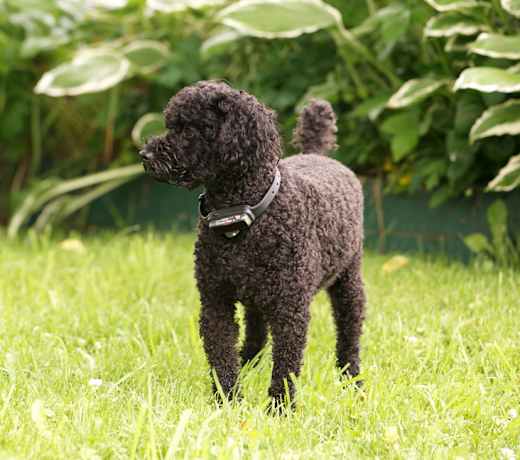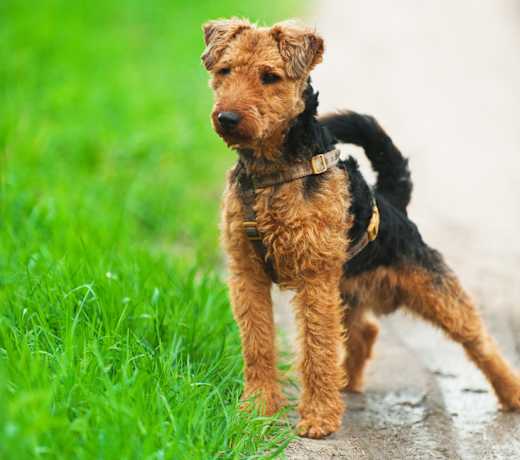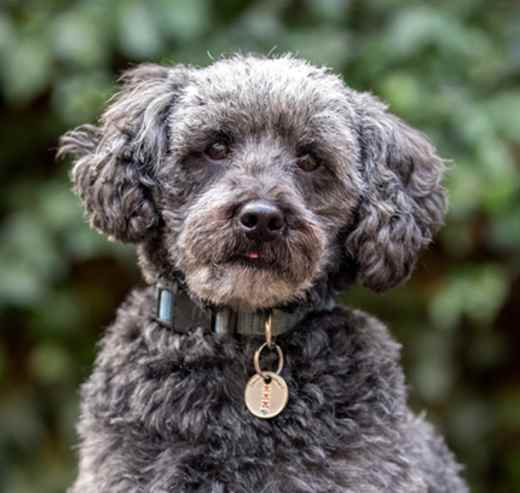Bedlington Terriers are a medium-sized breed. Male and female Bedlingtons are generally 15 to 16 inches tall at the shoulder and weigh 16 to 30 pounds.
Bedlington Terrier
Breed Type: Terrier
Common nicknames: Rothbury Terrier
Coat: Curly
Hypoallergenic: Yes, they may not trigger allergies.
Temperament: Smart, eager-to-please, friendly, affectionate
Life expectancy: 11-16 years
Color & patterns:
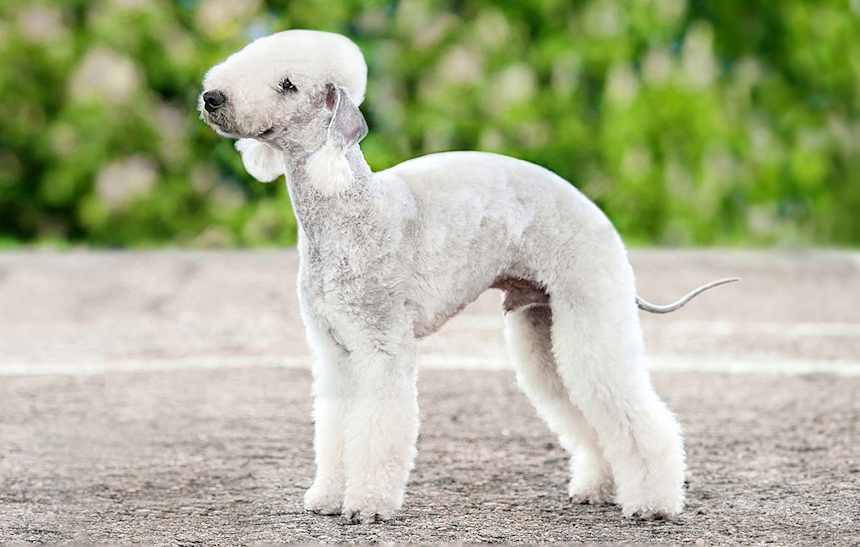
The Bedlington Terrier is a charming and unique breed that combines elegance with a dash of mischief. With their distinctive lamb-like appearance and curly, non-shedding coat, they’re sure to turn heads wherever they go. Bedlington Terriers are known for their playful and affectionate nature, making them wonderful companions for families and individuals alike. Despite their regal appearance, they have a mischievous side and love to engage in fun activities with their loved ones. While they can be independent thinkers, they are intelligent and respond well to positive reinforcement training. If you’re looking for a dog who stands out from the crowd and brings endless joy to your life, the Bedlington Terrier will steal your heart.
Bedlington Terrier characteristics
Learn about about Bedlington Terrier basics like their fur colors, shedding levels, how much grooming they need, and other Bedlington Terrier facts.
Average height
15-16 inches (38.1-40.6cm)
Average weight
16-30 pounds (7.3-13.6 kg)
Average lifespan
11-16 years
Exercise needs
Grooming needs
Full-grown size
Good with cats
Good with kids
Training aptitude
When do Bedlington Terriers stop growing?
Bedlington Terriers stop growing and reach their adult size by around 12 to 14 months of age. However, some Bedlingtons might continue to fill out and mature slightly beyond this age.
Do Bedlington Terriers shed hair?
No, Bedlington Terriers do not shed much hair. Any hair they do shed is less noticeable because it tends to get caught in the curly texture of their coat.
Despite their low shedding, the Bedlington Terrier’s coat requires maintenance. Regular brushing with a slicker brush or comb helps remove loose hair and prevent matting. Periodic trimming by a professional groomer preserves the breed’s lamb-like appearance.
Bedlington Terrier temperament
Learn about about the Bedlington Terrier temperament and how well they fit into your lifestyle, home environment, and family.
Are Bedlington Terriers good with kids?
Yes, Bedlington Terriers are good with kids in general. They are gentle, affectionate, and playful, which can make them good companions for children. They enjoy interacting with family members, including kids, and often engage in games and activities, which can be fun for children.
Like all dogs, Bedlington Terriers benefit from proper training and socialization. Teaching them how to interact gently with children can help foster positive relationships. Always supervise interactions between any dog and young children to ensure that both the dog and the kids are safe and comfortable. Teaching children how to properly approach and handle dogs is also crucial to ensure positive experiences for both the dog and the child.
Are Bedlington Terriers good with cats?
Bedlington Terriers can get along well with cats, but individual temperament and early experiences play a significant role in their interactions with feline companions. Like many terrier breeds, Bedlington Terriers have a strong prey drive and might chase smaller animals, including cats. This can be mitigated through training, proper introductions, and early socialization. Exposing a Bedlington Terrier to cats during puppyhood can help them learn to coexist peacefully.
Are Bedlington Terriers good with other dogs?
Yes, Bedlington Terriers are generally good with other dogs, particularly when they have been properly socialized from a young age. They are gentle creatures and can get along well with other dogs, especially if they have been introduced gradually and in a controlled manner.
However, each dog is unique, and individual Bedlington Terriers might have different levels of comfort and social behavior with other dogs. Observing their interactions and adjusting introductions as needed can help.
Do Bedlington Terriers bark a lot?
No, Bedlington Terriers do not bark a lot. In fact, Bedlingtons are relatively quiet compared to some other terrier breeds. However, like all dogs, individual Bedlington Terriers can vary in their barking habits. Like many breeds, they might bark more if they are bored, anxious, or not getting enough physical and mental stimulation.
Is a Bedlington Terrier a good pet?
Yes, a Bedlington Terrier is a good pet. They have moderate exercise needs and are well-suited to various living situations and family dynamics. They are affectionate, gentle, and calm, making them suitable for families with children and other pets. However, pet parents should always supervise interactions between dogs and kids to ensure that both understand how to behave appropriately around each other.
Bedlington Terriers are intelligent and can learn commands and tricks relatively easily. Their curly coat sheds very little, which can be beneficial for people with allergies or those who prefer a low-shedding breed.
Are Bedlington Terriers easy to train?
Yes, Bedlington Terriers are relatively easy to train, especially compared to some other terrier breeds. Bedlington Terriers are smart and can learn commands and tricks relatively quickly. Their intelligence can make training sessions productive, and they respond well to positive reinforcement techniques, such as praise, treats, and rewards.
Although generally eager to please, individual Bedlington Terriers might have varying levels of independence or stubbornness. Also, keep in mind that even if a certain dog breed is known to be easy to train, training any dog requires a long-term commitment.
Are Bedlington Terriers smart?
Yes, Bedlington Terriers are smart dogs. They can usually learn new commands and tasks with relative ease. They are generally attentive and perceptive, which aids them in learning new things. Bedlington Terriers also exhibit good problem-solving skills, which can be helpful in activities that require mental stimulation and engagement. Their intelligence allows them to adapt to various situations and environments, making them versatile companions.
Are Bedlington Terriers friendly?
Yes, Bedlington Terriers are friendly and affectionate dogs, especially with their families. They enjoy spending time with their pet parents and can form strong bonds. They are loyal to their families and often seek to be involved in family activities and interactions. They are usually sociable and can get along well with people when properly socialized from a young age.
Are Bedlington Terriers high maintenance?
Bedlington Terriers are considered moderately high maintenance. They need regular exercise to stay healthy and happy, but this is easily achieved with daily walks and playtime. Their curly, wooly coat requires brushing several times a week and professional grooming every six to eight weeks.
Do Bedlington Terriers like to cuddle?
Yes, Bedlington Terriers like to cuddle and be close to their people. These affectionate dogs often seek out physical contact and enjoy spending time close to their pet parents. They appreciate attention and interaction, and cuddling is one way they express their love and desire for companionship. Most Bedlingtons are happy to curl up next to you and enjoy your company.
Bedlington Terrier history
Learn about where the Bedlington Terrier came from.
Where are Bedlington Terriers from?
Bedlington Terriers are from the United Kingdom. The breed is named after the town of Bedlington in Northumberland, England. These terriers were originally bred in the 19th century and were valued for their tenacity, agility in hunting, and versatility in various types of work, including ratting and as companions for miners. The Bedlington Terrier’s unique coat is soft and curly; the traditional trim creates a distinctive lamb-like appearance.
How long do Bedlington Terriers live?
Bedlington Terriers live about 11 to 16 years. Regular veterinary checkups, a balanced diet, and proper exercise can help ensure they live a long, healthy life.
Why are Bedlington Terriers so rare?
Bedlington Terriers are relatively rare due to several factors. While they were once popular for their unique appearance and versatile skills, their prominence has diminished as other breeds have become more popular. Their distinctive appearance and specific traits may not appeal to everyone.
The breed’s rarity can also vary by region. Bedlington Terriers are more common in the United Kingdom and certain parts of Europe but less common in other parts of the world.
Bedlington Terrier health
Learn about about the Bedlington Terrier health outlook and what diseases they may be prone to at various stages of their life.
Do Bedlington Terriers have a lot of health problems?
Bedlington Terriers, like all breeds, can be prone to certain health issues. However, with appropriate care and attention, they can lead healthy and happy lives. Regular veterinary care and management can help mitigate many of the health concerns associated with the breed.
What diseases are Bedlington Terriers prone to?
Bedlington Terriers are prone to several diseases and health conditions. Being aware of these can help with early detection and management. Some diseases and health issues commonly associated with Bedlington Terriers include:
Copper toxicosis: This genetic condition affects the liver’s ability to process copper, leading to liver damage. Regular monitoring and a copper-restricted diet are important for managing this disease.
Liver disease: Aside from copper toxicosis, Bedlington Terriers may be prone to other liver-related issues.
Patellar luxation: This is a condition in which the kneecap dislocates or moves out of its normal position.
Progressive retinal atrophy (PRA): PRA is a group of genetic disorders that lead to progressive degeneration of the retina and can result in vision loss. Breeding practices that include testing for PRA can help reduce the incidence of this condition.
Glaucoma: This condition involves increased pressure within the eye, which can lead to pain and vision loss. Regular eye exams can help detect and manage glaucoma.
Hypothyroidism: An under-active thyroid gland can lead to various health issues, including skin problems and weight gain.
Skin issues: Bedlington Terriers can be prone to skin conditions, including allergies and dermatitis, which may require attention and management.
Are Bedlington Terriers hypoallergenic?
Yes, Bedlington Terriers are considered a hypoallergenic dog breed. While no dog breed is completely hypoallergenic, their coats shed less, which can help reduce the amount of hair and dander in the environment. Their coat is different from typical dog fur in that it’s more like wool, which might be less irritating to some people. The coat tends to trap loose hair, which reduces the amount of dander (tiny skin flakes that can trigger allergies) in the environment. Bedlington Terriers can be a good breed for people with mild allergies.
Popular Bedlington Terrier mixes
Bedlington Terriers are sometimes mixed with a variety of other breeds. Some common mixes include:
Clumberton (Bedlington Terrier + Clumber Spaniel)
Bedlington-Poodle (Bedlington Terrier + Poodle)
Lablington (Bedlington Terrier + Labrador Retriever)
Bedlington-Jack Russell (Bedlington Terrier + Jack Russell Terrier)
Bedlington-Shih Tzu (Bedlington Terrier + Shih Tzu)
Bedlington-Yorkie (Bedlington Terrier + Yorkshire Terrier)
Bedlington-Beagle (Bedlington Terrier + Beagle)
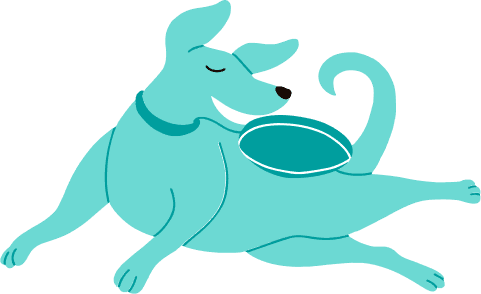
Find Bedlington Terrier puppies near you
Adopting a Bedlington Terrier
We don't see any Bedlington Terriers available for adoption in your exact location or cities near you, but here are some adorable similar breeds in Beverly Hills, CA.

Gerrard
Miniature Poodle
Male, 10 yrs
Los Angeles, CA
Good with dogs
Good with cats
House-trained
Spayed or Neutered
Shots are up-to-date

Brownie
Poodle (Miniature) Shih Tzu
Male, 8 yrs 6 mos
Los Angeles, CA
Good with dogs
Good with cats
House-trained
Spayed or Neutered
Shots are up-to-date

Madeline
Poodle (Miniature)
Female, 12 yrs 1 mo
Los Angeles, CA
Good with dogs
House-trained
Spayed or Neutered
Shots are up-to-date

Tommy
Poodle (Toy or Tea Cup)
Male, adult
Los Angeles, CA
Spayed or Neutered
Shots are up-to-date
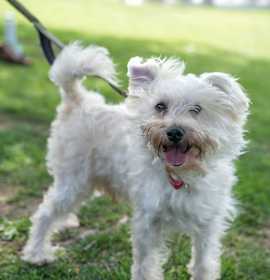
Peter
Poodle (Miniature) Schnauzer (Miniature)
Male, young
Beverly Hills, CA
Good with dogs
Not good with cats
Needs experienced adopter
House-trained
Spayed or Neutered
Shots are up-to-date

Professor McGonagall
Poodle (Miniature)
Female, 7 yrs 4 mos
Beverly Hills, CA
House-trained
Spayed or Neutered
Shots are up-to-date

Willow
Miniature Poodle
Female, 7 mos
Los Angeles, CA
Good with dogs
Shots are up-to-date

Waldo
Miniature Poodle
Male, 7 mos
Los Angeles, CA
Good with dogs
Shots are up-to-date

Gerrard
Miniature Poodle
Male, 10 yrs
Los Angeles, CA
Good with dogs
Good with cats
House-trained
Spayed or Neutered
Shots are up-to-date

Brownie
Poodle (Miniature) Shih Tzu
Male, 8 yrs 6 mos
Los Angeles, CA
Good with dogs
Good with cats
House-trained
Spayed or Neutered
Shots are up-to-date

Madeline
Poodle (Miniature)
Female, 12 yrs 1 mo
Los Angeles, CA
Good with dogs
House-trained
Spayed or Neutered
Shots are up-to-date

Tommy
Poodle (Toy or Tea Cup)
Male, adult
Los Angeles, CA
Spayed or Neutered
Shots are up-to-date

Peter
Poodle (Miniature) Schnauzer (Miniature)
Male, young
Beverly Hills, CA
Good with dogs
Not good with cats
Needs experienced adopter
House-trained
Spayed or Neutered
Shots are up-to-date

Professor McGonagall
Poodle (Miniature)
Female, 7 yrs 4 mos
Beverly Hills, CA
House-trained
Spayed or Neutered
Shots are up-to-date


